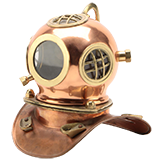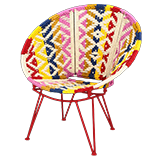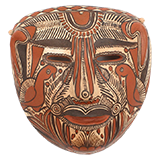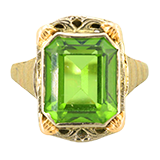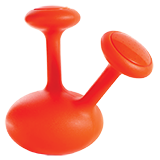Seller Story: Bethesda, MD
“My mother, Rima Schulkind, was always very creative and visual, always building furniture and tiling things. After she married my father and had my brother and me, she went back to school and got her Bachelor’s Degree in Sociology from George Washington University. She went to work as a social worker and was looking for a creative outlet, so she wound up taking a pottery class at the local community college. That was where she really found herself. She began creating art professionally through that discovery. I remember when she got her first kick wheel and starting to use portions of our basement as a studio. She started throwing pots, but quickly realized how much she loved working with slabs of clay. Her early trademark pieces were very thin, translucent porcelain that she would use for bowls and light fixtures, some of which are in the sale.
The other work she did that was very much recognized was the stoneware – with very natural, unglazed rust and earthy tones with beautiful glazes inside. She’d collect natural things to make imprints in them — pine cones; tree pods. You can tell how tactile she was about her work because when you look at it, you can imagine how it felt to touch it and build it.
She started with vessels and then moved into more sculptural forms, that was one of the ways she really grew in terms of her work. The other was that she started exploring media in addition to clay; bending neon, working with plexiglass and developing cement mixtures. The unifying theme of her many explorations is light and shadow. She was always playing with light.” -Laura Schulkind


Signed Limited Edition Alexander Calder "Moon and Planets"

Jacqueline Gikow Stoneware Decanter

Signed Limited Edition Salvador Dali Lithograph

Hanging Ceramic Light Artwork by Rima Schulkind

Neon Sculpture on Wood by Rima Schulkind

Rima Schulkind Mixed Media Black, White and Red Wall Scuplture

Contemporary Handwoven Accent Rug

Pair of Janet Wheeler Mixed Media Collages


Sheila Rotner "Tonal II" Acrylic on Paper

Signed Hand Thrown Art Pottery Vase

Set of Free Form Pottery Bowls by Rima Schulkind

Len Harris "Whirling" Sculpture

Rima Schulkind Agamograph

Rima Schulkind Two Piece Rainbow Foam Sculpture

Paula W. Mostur Ceramic Sculpture

Rima Schulkind "Split Sphere" Geometric Foam Sculpture

Set of Rima Schulkind Ceramic Pottery Pieces

Handmade Hanging Fiber Art Sculpture

Rima Schulkind Sculptural Vessel

Rima Schulkind "Earth Mother" Ceramic Sculpture

Driftwood Sculpture on Pedestal

Paulus Berensohn Mushroom Pottery Vessel

Rima Schulkind Mixed Media Wall Mirror

Ceramic Sculpture Depicting Two Bodies in Driftwood

S.L. Jevtic Layered Oil on Canvas

Signed Raku-Fired Vase

Pair of Rima Schulkind Clay Sculptures

Hanging Woven Toucan Basket

Yuriko Yamaguchi "Untitled" on Handmade Paper

Jeff Kirk "Baby Teeth" Pit Fired Lidded Vessel

Carla Nampeyo Hopi Carved Egg

Jan Jacque Pit Fired Pottery Basket

A. Jeffrey Zigulis Bamboo Raku Fired Ceramic Vase

Pair of Rima Schulkind Pottery Necklaces

Cynthia Young "Echo II" Oil on Canvas

Signed Photograph Depicting Clothesline in Florence, Italy

Signed Ceramic Sculpture

Alex Andra "Rumors" Ink Drawing

Handmade Fabric Window Hanging

Handwoven Circular Fiber Artwork

Rima Schulkind Twig and Ceramic Sculpture

Rima Schulkind Contemporary Black Lighted Sculpture

Diminutive Thin Wooden Carved Egg Basket

Rima Schulkind Yard Sculpture

Mixed Media Female Form Sculpture by Rima Schulkind

Ceramic Hanging Planter

Rima Schulkind Mixed Media "Medusa" Sculpture

Ute Conrad Fire Enamel Steel Panel Painting

Abstract White Wall Sculpture

Rima Schulkind "Boxscope" Vertical Wood Sculpture

Rima Schulkind Plaster and Clay Sculpture

Signed Limited Edition Keiko Hiratsuka Moore Woodblock

Embossed Handmade Paper Art

Rima Schulkind Pottery Sculpture

Pietro Lazzari "Fiori D Amore" Foam and Oil Painting

Sterling SIlver Sculpture on Marblized Stone Base

Hand Made Pottery Mask

Pair of Framed Artwork

Signed Limited Edition Photograph by Zinnia "Unside/Outside"

Group of Porcelain Light Shades by Rima Schulkind

Rima Schulkind Foam Wall Plaque on Board

Rima Schulkind "Trophy Wife" Body Form Mixed Media Wall Sculpture

Abstract Mountain and Sun Sculpture

Oil on Paper titled "Close to Home" by Gilbert
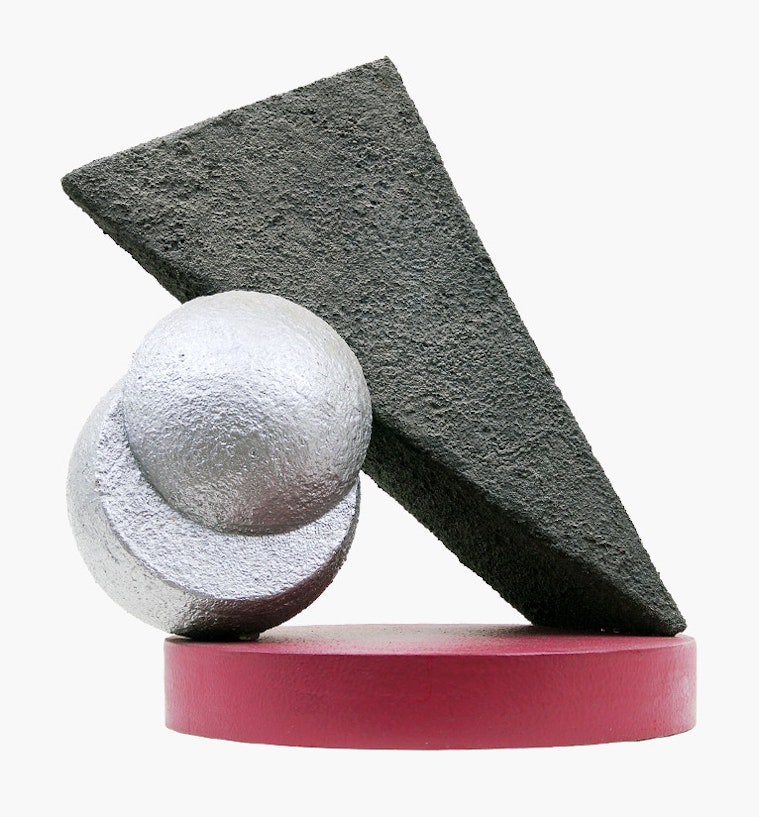
In her artist’s statement, your mother said she contributed many works to public space initiatives. Why was that important to her?
That’s one of the things that — both directly and by example — I took away from my mother’s life: you express who you are and your good works through your livelihood. She was always very politically engaged and focused on community. She founded the first Head Start program in our area, she worked hard on school desegregation; I was raised going to anti-Vietnam War protests. So I think it was natural that, when she discovered art, she really felt a calling to what it meant politically to be an artist. What it meant to her was making art available to people beyond those who had the means to buy it. She brought interns and young students into her studio and encouraged them; she worked on a hotline for battered women; we both went to Nicaragua and worked for the Sandinistas in the 1980s and my mom brought supplies to artists.
There are several pieces here from other artists. Tell us about the art she collected herself.
As you can see, her taste was very eclectic. She and my father were married for almost 60 years and they collected that art together. It was one of the things they enjoyed. My mother always said “Artists support each other,” I think she knew or met most of the artists whose works she collected. When she started creating vessels, her first venues for showing her work were craft fairs. This was in the early 1970s, so there was batik and tie-dye, natural weaving, pottery. People would trade their work, and that’s how she started collecting.
